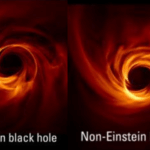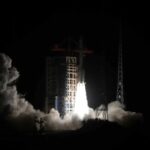The swirling spiral galaxy in this NASA/ESA Hubble Space Telescope image is NGC 3285B, which resides 137 million light-years away in the constellation Hydra (the Water Snake). Hydra has the
phys.org35- Page
In 2015, astronomer Tabetha Boyajian and colleagues announced the discovery of unusual light fluctuations coming from a star about 1,500 light-years away. It came to be known as “Tabby’s star”
The US space agency NASA will lose about 3,900 employees under Donald Trump’s sweeping effort to trim the federal workforce—at the same time as the president prioritizes plans for crewed
A rocket carrying carbon dioxide- and Earth-observing satellites successfully blasted off from South America late Friday.
It’s almost time for summer’s meteor shower duet.
A new study led by researchers from the Yunnan Observatories of the Chinese Academy of Sciences has developed a neural network-based method for large-scale celestial object classification, according to a
Just a short distance inland from the waves crashing against California’s shore, NASA’s Relativistic Electron Atmospheric Loss (REAL) CubeSat mission launched into the sky, taking off at 2:13 p.m. ET
NASA Artemis missions are working toward a near future where humans are an interplanetary species—lunar bases are planned by 2030 and a round trip to Mars in 2039.
Sandia scientist John Sandusky believes he has found a way to put heliostats, which typically turn solar energy into electricity, to work in the dark.
A team of astronomers have made a fascinating discovery that forces us to rethink our understanding of how dead stars behave. Using the powerful Low Frequency Array (LOFAR) radio telescope
-
 012024 in Review: Highlights from NASA in Silicon Valley
012024 in Review: Highlights from NASA in Silicon Valley -
 02Panasonic Leica Summilux DG 15mm f/1.7 ASPH review
02Panasonic Leica Summilux DG 15mm f/1.7 ASPH review -
 03How New NASA, India Earth Satellite NISAR Will See Earth
03How New NASA, India Earth Satellite NISAR Will See Earth -
 04And Thus Begins A New Year For Life On Earth
04And Thus Begins A New Year For Life On Earth -
 05Astronomy Activation Ambassadors: A New Era
05Astronomy Activation Ambassadors: A New Era -
06SpaceX launch surge helps set new global launch record in 2024
-
 07Space Force plans new ‘Futures Command’ amid pressure to speed up modernization
07Space Force plans new ‘Futures Command’ amid pressure to speed up modernization





